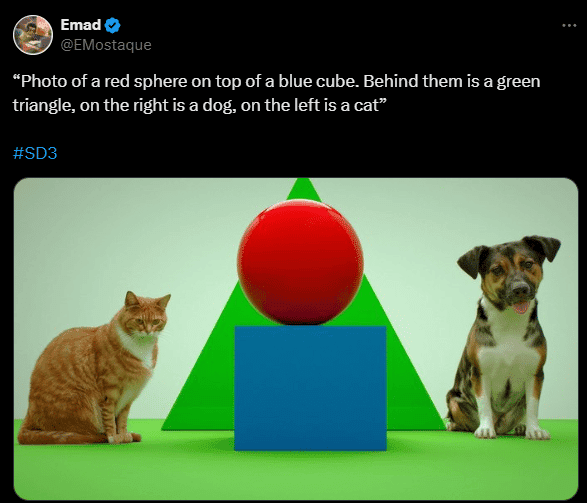Stability AI’s newest product, Stable Diffusion 3.0, is a revolutionary development in AI technology. Its primary goal is to enhance image quality and writing ability with the use of artificial intelligence. The diffusion transformer design that this system utilizes for its processes is similar to OpenAI’s Sora model.
Initial experiments have yielded positive results so far. The program has been reported to generate higher-quality images, especially when dealing with complex subjects or scenarios. Moreover, it has also proven itself superior in terms of generating written content compared to its predecessor!

Having different sizes (from small to really big) that you can choose for the model is quite handy. It isn’t quite ready for everyone as of now, however you can sign up and give it a try in advance so that it will be more perfect when released to all other users.
Cool things are also being done by other companies like DALL-E and Midjourney, but Stable Diffusion 3.0 might just be as good if not better!

Through better training methods and more refined optimization techniques, Stable Diffusion 3.0 now generates higher-definition images that look much more like real-world objects or places. These computer-generated scenes are incredibly detailed—whether they’re portraits or landscapes—and they also happen to be the most realistic-looking ones we’ve seen so far from AI.
Beyond image-making, Stable Diffusion 3.0 has also improved text generation skills, allowing it to craft compelling narratives with human-like fluency as well as believable dialogue and descriptive passages. This ability to generate language is demonstrated in everything from informative articles generated by models trained on news data sets, through poetic verse penned by a program trained only using Shakespeare’s sonnets—they both seem just about equally creative when read side-by-side!
To make sure that Stable Diffusion 3.0 works consistently under different input conditions and real world situations, Stability AI invested heavily into making the model robust against such things as adversarial attacks or perturbations of data within its training set. This means you can rely on this thing not going haywire if someone were trying tricksy business with it while you’re trying to use it for something important yourself.
Stability AI wanted Stable Diffusion 3 to understand what words mean better than any previous version had done before so they put together really big collections of texts about lots different stuff from all over creation (literally). They used these huge numbers of examples teach their neural net how words work together in different contexts – and after seeing so many sentences saying pretty similar things but looking completely unrelated sometimes too! – The end result was an A.I system capable of understanding almost any kind content expressed using natural language.
Stability AI realized that people found the old version really hard to use so for this release they made the stable diffusion interface easier and more fun! Now you can control everything with buttons that are easy to understand but feel good when you press them because we use haptic feedback which makes pressing on things feel like you are doing something important. Also there is a slider bar where you can choose how much of the output should be realistic or creative – this means if you want it to look really realistic then just move the slider all way left, but if you want it to come up with something no one has ever thought of before then move it right!
With stable diffusion 3.0 coming out soon we thought why not also release some tutorials and other resources so people can learn about A.I and start using stable diffusion without needing to be an expert! If someone wants their app or website have more creative and artistic content, they would love stable diffusion. If someone wants a poem written in the style of Shakespearean sonnets, they would love stable diffusion.
There was a recent industry conference where Elon Musk mentioned his concerns over Google’s AI research ethics at large because he feels that these projects could lead us down roads towards inhumane futures; However Elon did not give any specific details as examples during this speech so now we have more reason than ever before debate what exactly responsible use mean?
Representatives from Google have defended their AI initiatives against Musk’s claims, stating that they follow ethical principles, robust safety measures, and good practices for the development of responsible AI. They say that any research into artificial intelligence is done with regard to its impact on society, ethics and compliance with regulations and that they will continue pushing boundaries in AI so long as it serves mankind better while reducing risks or challenges.
This exchange between Musk and Google underlines how complicated governing artificial intelligence can be; therefore there should be positive conversations about these issues among different actors within the industry itself which ensures accountability towards constructive use of such technologies that benefit everyone in future. As more people are affected by rapid changes brought by AI systems to various aspects of life – we must always consider ethics first, make our actions transparent and establish responsibility over them when deciding what comes next.




